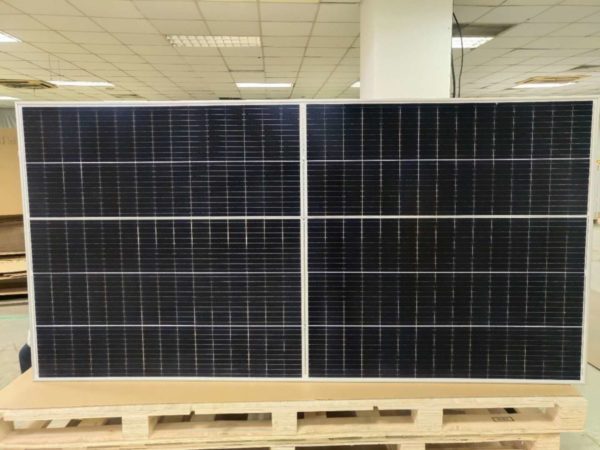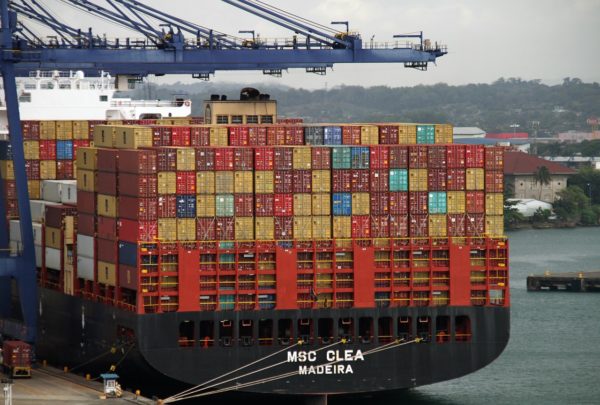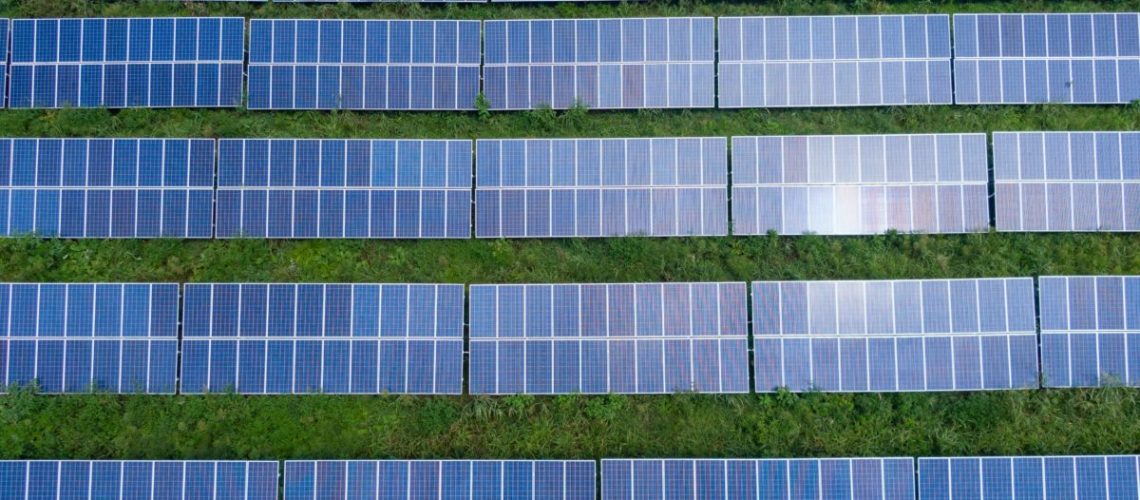No longer the new kids on the block, large-format solar modules (LFMs) have become the industry standard for new, utility-scale solar installations, with the conversation now shifting to what the optimal wafer size is: 210mm or 182mm.
And while manufacturers, developers, and EPCs have an extra year of experience under their belts working with and installing LFMs, that year was by no means a normal one, and some difficulties in switching to the new standard persist.
As was true in 2020, a significant portion of the effort to optimize and standardize LFMs’ place in the solar industry has fallen on the tracker manufacturers whose products house these panels.
To gain a better perspective on what has changed in the past year, pv magazine sat down with representatives from some of the industry’s leading tracker manufacturers, Trina Solar, NEXTracker, and Array Technologies to discuss the common themes of availability, optimization, and standardization.
Settling on size
Potentially the greatest selling point of LFMs is the drastic reduction in project costs achievable by the simple idea of purchasing fewer, more powerful solar modules. Fewer modules means fewer trackers, fewer inverters, fewer components overall, and generally decreased project labor times.
Yet, so long as variances in cell size and general LFM form factor exist, tracker manufacturers have to make sure they’re capable of mounting all of these form factors onto their products, meaning they have to devote valuable production capacity to each little variance from module to module, as well as devoting time and resources to testing the effects that these small changes bring.
“What’s really important to us is the locations and the dimensions of actually mounting onto the module,” explained Array Technologies’ Senior Product Manager for PV Module Interfaces, Jim Sorensen.
“What we want to do is we want to have a gap between the modules. And if the whole dimension varies from the edge of the module to where the hole is – where we mount that module in order to maintain that gap, and to prevent modules from touching – it becomes really important.”
Sorensen explained that the variance then becomes an issue of supply chain complexity – not an area any manufacturer wants to stress in the current environment. The variances mean that manufacturers have to keep diverse product inventory, meaning that both production and storage capacity, as well as component supply, become much more strained and more paramount of a concern, eventually reflected in higher tracker prices and overall levelized cost of electricity.
While all three companies are, in practice, technology and form agnostic, representatives from each expressed that one of the fastest ways to drive down levelized cost of energy (LCOE) would be through standardization. All three have shown a high regard and support for the 210mm cell size, being included in Trina’s 2021 White Paper on Tracker Compatibility for Trina Solar 210 Vertex Modules, yet all assert that it isn’t a conversation of favoritism, rather one of consistency.
Those who spoke with pv magazine all shared optimism that some sort of standardization is coming, hoping that the industry-wide benefits will outweigh specific manufacturer preferences.
Last May, Trina participated in a seminar on the standardization of module sizes, organized by the China Photovoltaic Industry Association, alongside other industry stalwarts like Risen Energy, Canadian Solar, and Tongwei.

During the seminar, all parties present agreed on the overall dimensions of modules, technical specifications of mounting holes, and smaller details like cell spacing and design reference standards, a significant step forward toward greater standardization.
All parties also share the belief that standardization will greatly reduce BOS costs and LCOE, and deliver the convenience and maximum value of ultra-high power modules and solutions.
“When we think back to 156mm or 158mm cells, at that time, pretty much all the modules were also standardized, in size, in length and width, in distance between mounting holes, etc.,” said Mireia Beltrá, product marketing manager with Trina. “That broke up after this era.”
“I think we have found an optimum on the size,” said Beltrá, a popular sentiment, considering that any further increase in size would require three-person installation crews as well as greater reinforcement of mounting systems, both of which would contribute to increased LCOE.
Trina has publicly thrown support behind the 210mm module and its standard form factor, as the company currently manufactures 210mm Vertex 670W, 600W and 550W bifacial dual-glass modules.
Shipping and supply
Standardized or not, the LCOE decreases that LFMs are able to provide aren’t just reflected in more watts per tracker and reduced hardware costs. The technology has also been able to provide significant decreases in project soft costs; the expenses that can’t be fixed through traditional technology improvements.
Though soft costs have traditionally been the bane of residential and commercial solar, their effects are felt in large-scale installations, too, and represent a significant barrier toward realizing optimized LCOE.
One of the major soft cost reductions made possible by LFMs is an up to 12% reduction in overall transportation costs.

According to Beltrá, the size and form factor of Trina’s LFM offerings has allowed the company to change the way that they package the modules, now storing modules vertically in transit, rather than horizontally.
Specifically, with the Vertex 670W module, Trina is able to fit 10 to 15% more kilowatts of modules per standard shipping container. Just by providing a more optimized fit within containers, Trina has realized an average transportation cost reduction of between 10to12%.
Comparable to a 540W module, Trina is able to fit one extra module per standard pallet, loading up each pallet with 32 modules, rather than 31. Not as many pallets of 670W modules fit in a shipping container (18) as would 540W modules (20), but the overall wattage contained in each container is still higher, at 373,860W for the 670W modules and 334,800 for the 540W modules.
These cost optimizations may take some time to even be seen, however, as the availability of shipping containers has been a major challenge throughout the Covid-19 pandemic, and backups and delays at ports have been a significant issue for the past 24 months.
As was outlined in the May edition of pv magazine, the per unit cost of shipping modules has quadrupled from a steady recent average of around $0.005/Wp watt peak to $0.02/Wp in 2021.
Not only have shipping costs increased for all products, but availability has become an issue, as modules languish in ports. According to NEXTracker’s Director of Global Sales Engineering, Nick Price, production slowdowns and shipping delays have made it difficult for developers to even source the modules they’ve built their projects around.
“We’re seeing a lot more [projects] right now that are actually going in with 182mm,” Price said. “210mm is still a little bit on the horizon for us. We have projects that are designed for 210mm, but as far as the delivery and installation of 210mm, it has not really hit the ground yet, from what I’ve seen.”
Of course these availability constraints are temporary and are not exclusive to LFMs, but time lost on project construction is money lost and, according to Price, has led to situations where an entire project is all but completed; a generation skeleton waiting for modules.
“Because we’re a self-powered tracker, we can commission the whole site prior to any modules landing,” Price said. “We can do everything self-powered, including our communication systems and our network communication systems. So we can have full scale rows ready to go and hit the ground as soon as the modules get delivered.”
A Future for Small Format
While LFMs have rightly supplanted themselves as the module standard, that doesn’t mean that their smaller counterparts have been entirely invalidated. Both Sorensen and Price outlined that usage scenarios still exist for smaller-format modules, and hope that their production doesn’t cease outright.
“I struggle with how it’s gonna work down the line,” Price said. “I mean, there’s got to be some module manufacturer who has the foresight, that there’s enough volume to keep producing, you know, the kind of two meter by one meter, smaller form factor. There’s going to be O&M issues down the line where these things need to be replaced, regardless of the projects that are being built right now. 5-10 years from now, there’s going to be module breakage, there’s going to continue to be issues. So how do you figure out how to replace those long term?”
According to Price, most of the module manufacturers that NEXTracker works alongside haven’t been too keen to keep producing smaller-format modules, nor have they been reserving production for any issues down the line.
This could change, however, as there is one usage scenario where smaller modules really show their strength: projects installed in areas particularly prone to extended, intense wind loads.
Larger modules take wind and snow pressures and turn them into higher forces levied against the module and the tracker structure. This factor has required additional reinforcement of tracker mounting systems, and, in some cases, the installation of additional hardware to support the module. As these components are added, the LCOE savings presented by LFMs decrease.
“We talk about large format modules as reducing structure costs and total LCOE costs,” explained Sorensen. “One component of that is wind speed and wind pressures. What we’re finding is that projects in the mainstream, definitely, you get that benefit, but as you get to higher higher wind pressures that benefit kind of goes away.”
Sorensen believes that there’s enough of a market in high-wind areas to justify the continued production of smaller-format modules, especially as hurricane-prone states like Florida and Louisiana continue to grow their solar profiles.



